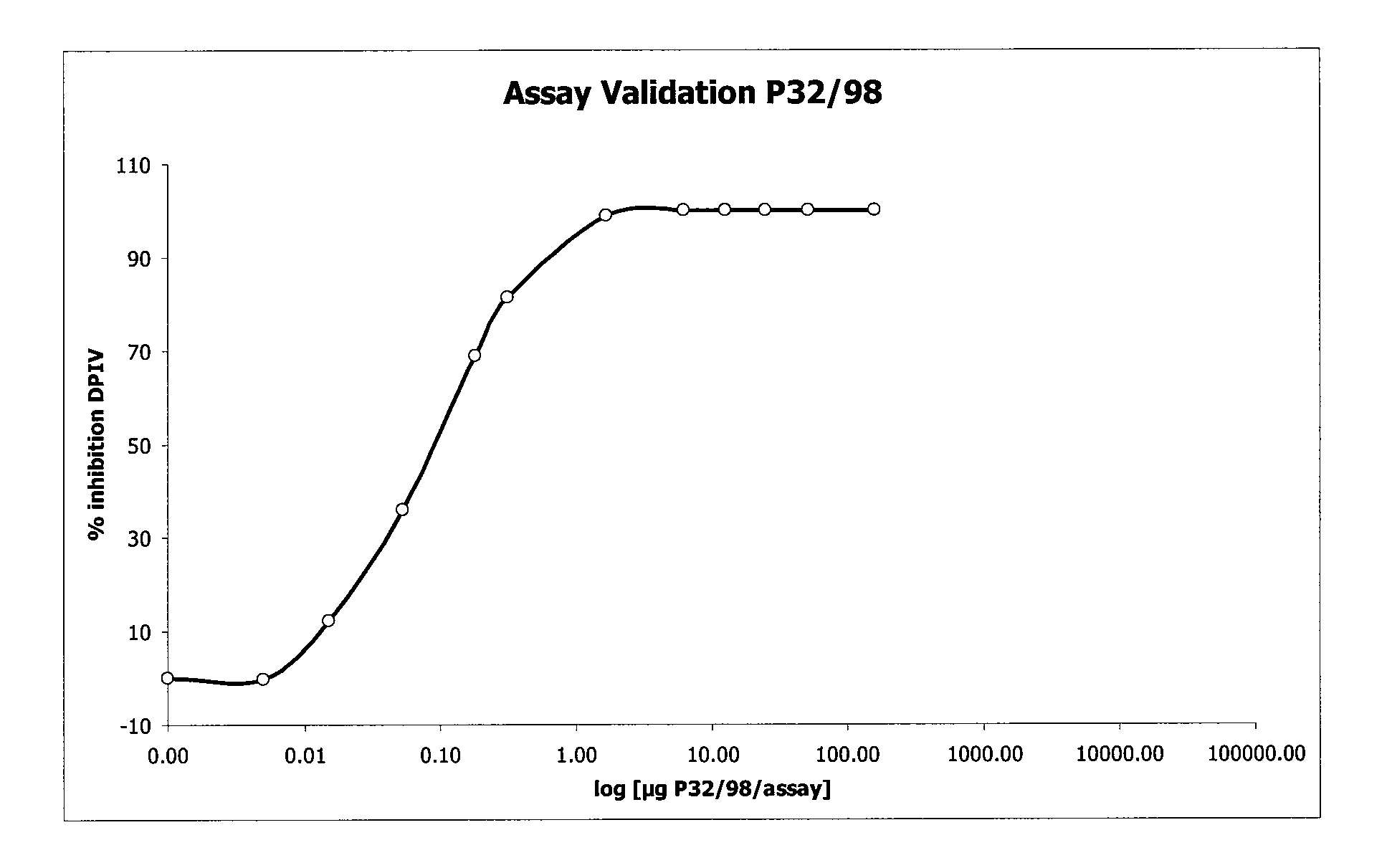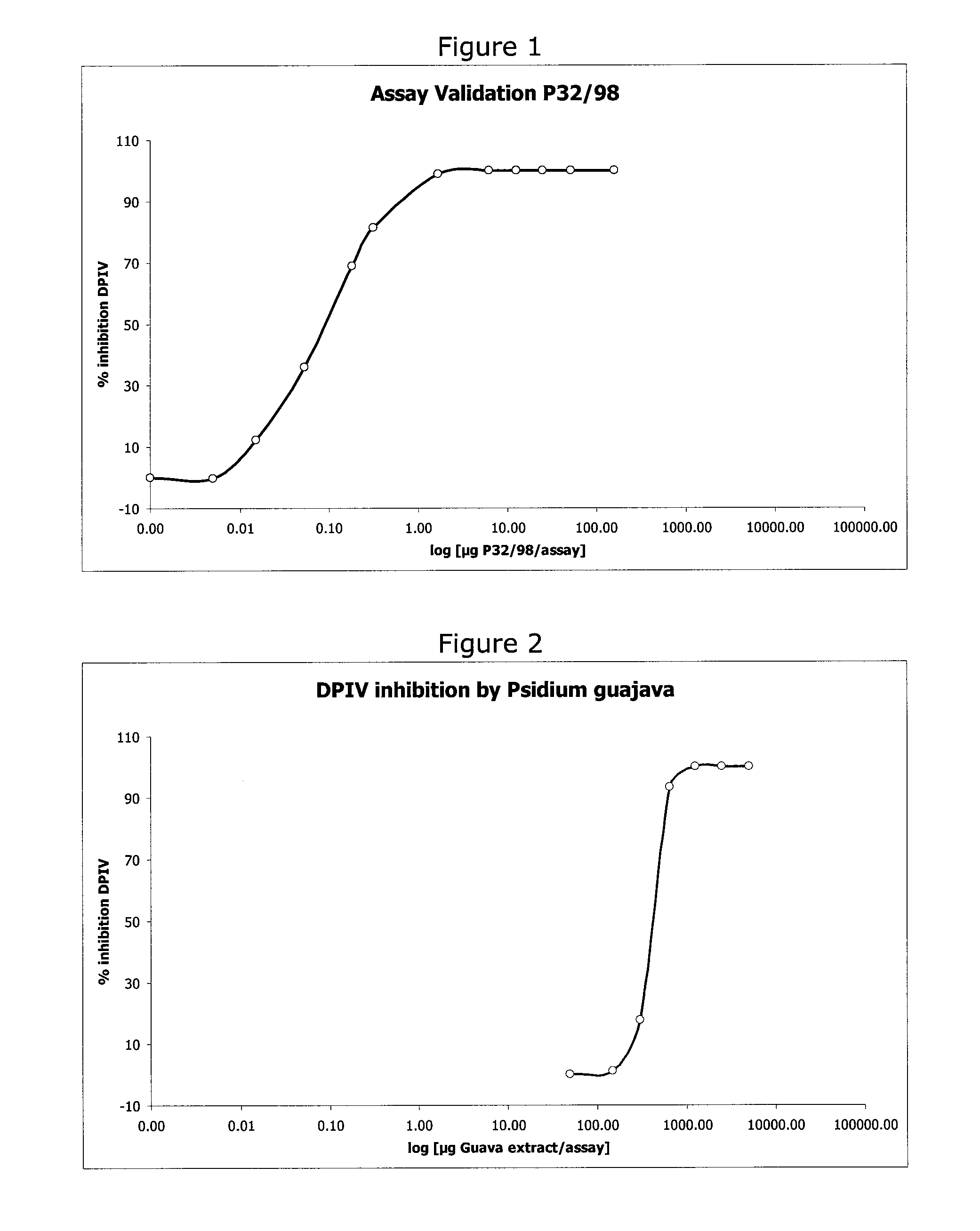Guava extract
a technology of guava and extract, which is applied in the field of purification and isolation of guava extract, can solve problems such as unwanted side effects
- Summary
- Abstract
- Description
- Claims
- Application Information
AI Technical Summary
Benefits of technology
Problems solved by technology
Method used
Image
Examples
example 1
General Description of the Preparation of an Ethanolic Extract from Psidium guajava
[0203]The production process of preparing an extract from the leaves of Psidium guajava is described by following process steps:[0204]Pulverize Psidium guajava's leaves to a fine powder.[0205]Extract with ethanol.[0206]Reduce the pressure of extract liquid and concentrate until evaporation of ethanol.[0207]Eliminate insoluble impurities by centrifugation and obtain a clarified liquid.[0208]Load the clarified liquid onto a chromatographic column filled with a macroporous resin, remove further impurities with water and then desorb active components with ethanol and collect the ethanolic eluate.[0209]Dry the ethanolic eluate to yield Psidium guajava extract.
[0210]Details of Extraction:
[0211]1. Extract: Powdered Psidium guajava leaves were extracted two times with 80% ethanol at 60±2° C. The extraction duration was 2 hours for each step. The ratio of the final ethanol volume to the raw material powder we...
example 2
Production of Psidium guajava Extract
[0215]500 g of pulverized raw material (fresh Psidium guajava fruit) were weighed and transferred into 2000 ml 80% ethanol in a 3-neck flask. The mixture was mixed gently for 2 hours at 60° C. The solution was filtered. The filtrate was collected, and the extraction of the solids was repeated with 2000 ml 80% ethanol under the same conditions. The solution was again filtered, and both filtrates were combined.
[0216]The combined filtrate was concentrated under reduced pressure at 60° C. until no ethanol was left. The vacuum was about −0.09 MPa. The resulting ethanol-free liquid was centrifuged to remove solid particles. The liquid was removed from a pellet of solids. 200 ml water was added to the pellet that resulted from centrifugation and the mixture was again centrifuged. Both aqueous supernatants were combined. The clarified liquid was loaded onto a macroporous resin (Type Amberlite XAD4) and rinsed first with 800 ml water at a flow rate of 17 ...
example 3
Production of Psidium guajava Extract
[0218]20 kg pulverized Psidium guajava leaves powder were weighed and put into a 250 L boiler, then 160 L 80% ethanol were added, and the mixture was mixed for 2 hours at 60° C. The solution was filtered and collected. 160 L 80% ethanol was added to the residue. The mixture was extracted for 2 hours at 60° C., filtered, and filtrates were combined. The resulting mixture was concentrated under reduced pressure at 60° C. until there was a trace amount of ethanol remaining. The vacuum during concentration was about −0.09 MPa.
[0219]The aqueous mixture was centrifuged. The resulting supernatant was removed from the solid pellet that was formed during centrifugation. The pellet was disrupted, 40 L of water were added to the material and the aqueous mixture was centrifuged. The supernatants from the first extraction and second extraction were combined. The combined aqueous liquids were passed through a macrocrosslinked macroporous resin (Type Amberlite ...
PUM
| Property | Measurement | Unit |
|---|---|---|
| total weight | aaaaa | aaaaa |
| total weight | aaaaa | aaaaa |
| total weight | aaaaa | aaaaa |
Abstract
Description
Claims
Application Information
 Login to View More
Login to View More - R&D
- Intellectual Property
- Life Sciences
- Materials
- Tech Scout
- Unparalleled Data Quality
- Higher Quality Content
- 60% Fewer Hallucinations
Browse by: Latest US Patents, China's latest patents, Technical Efficacy Thesaurus, Application Domain, Technology Topic, Popular Technical Reports.
© 2025 PatSnap. All rights reserved.Legal|Privacy policy|Modern Slavery Act Transparency Statement|Sitemap|About US| Contact US: help@patsnap.com



